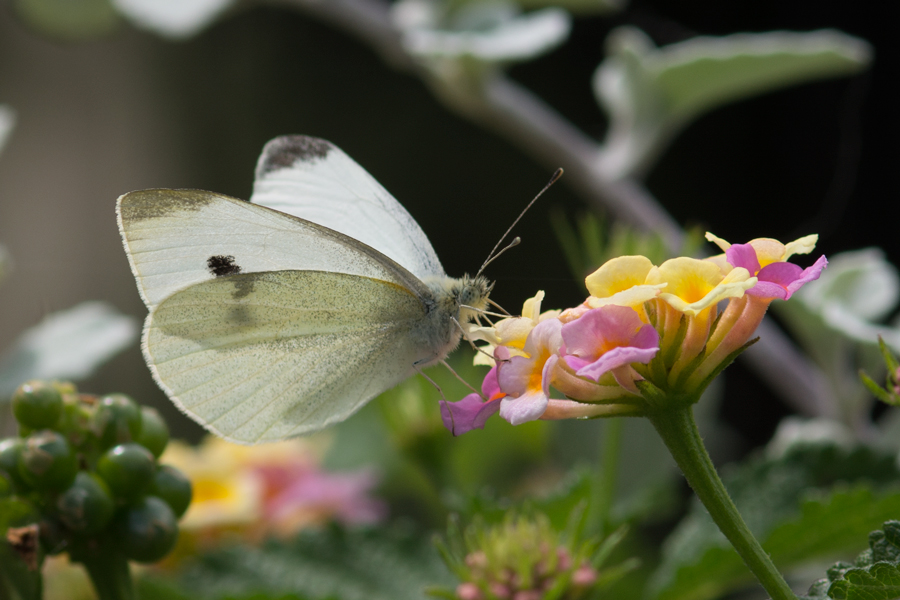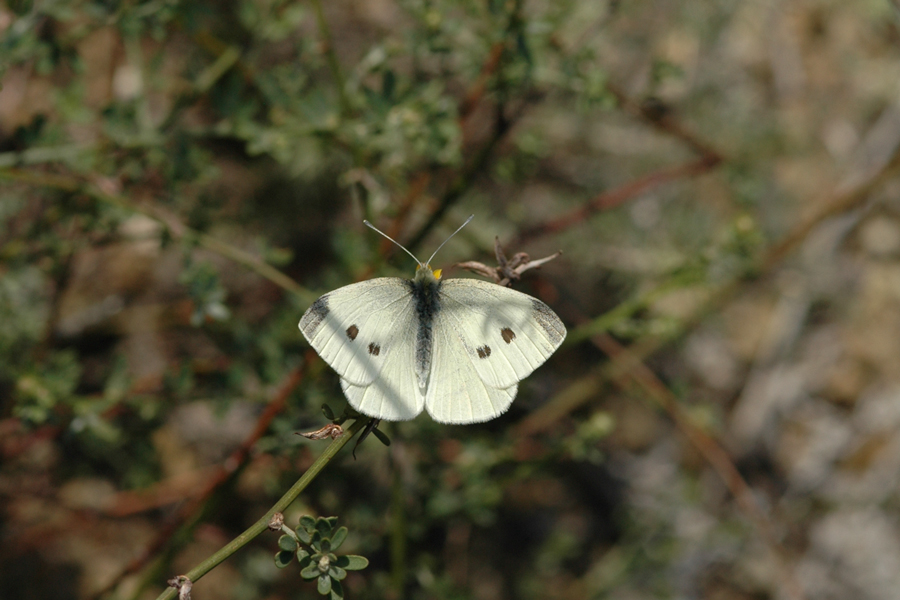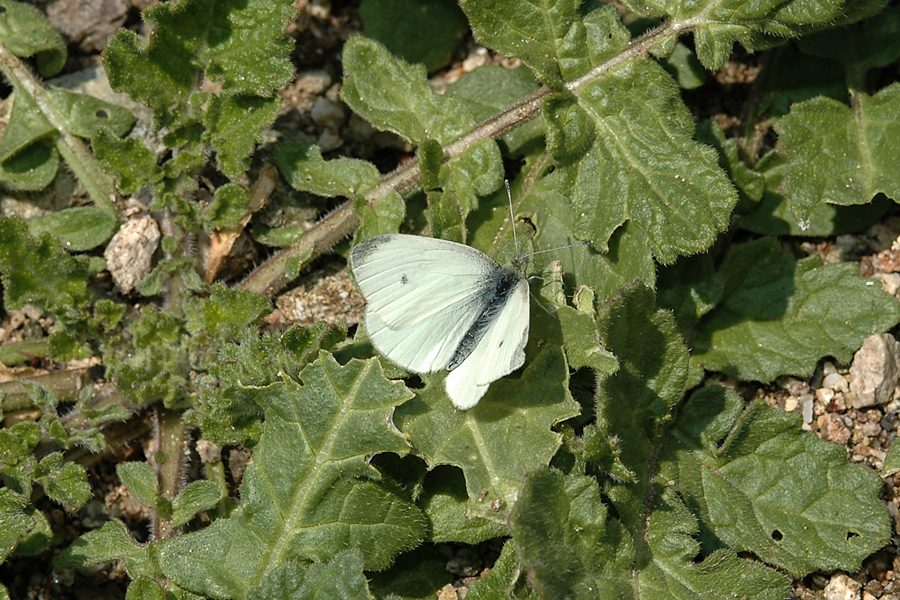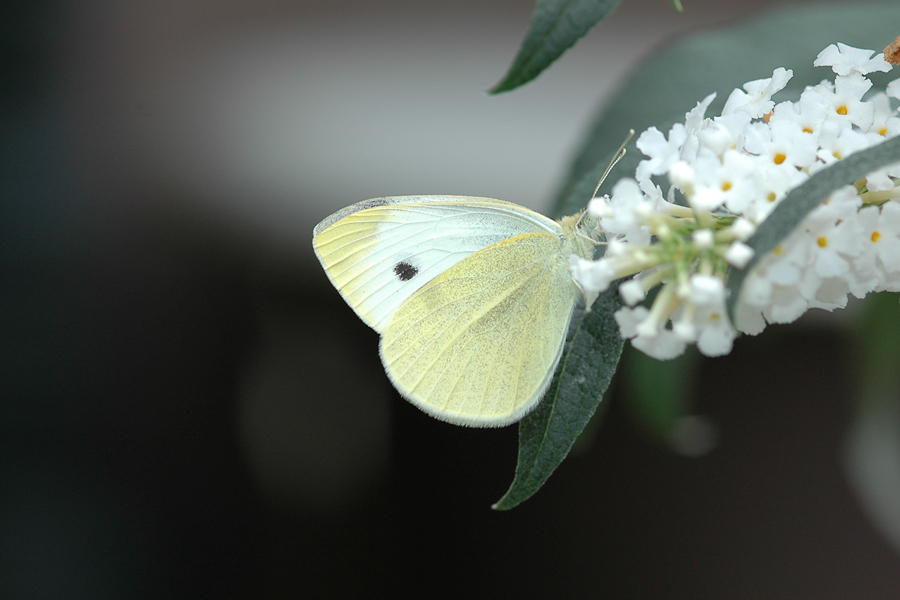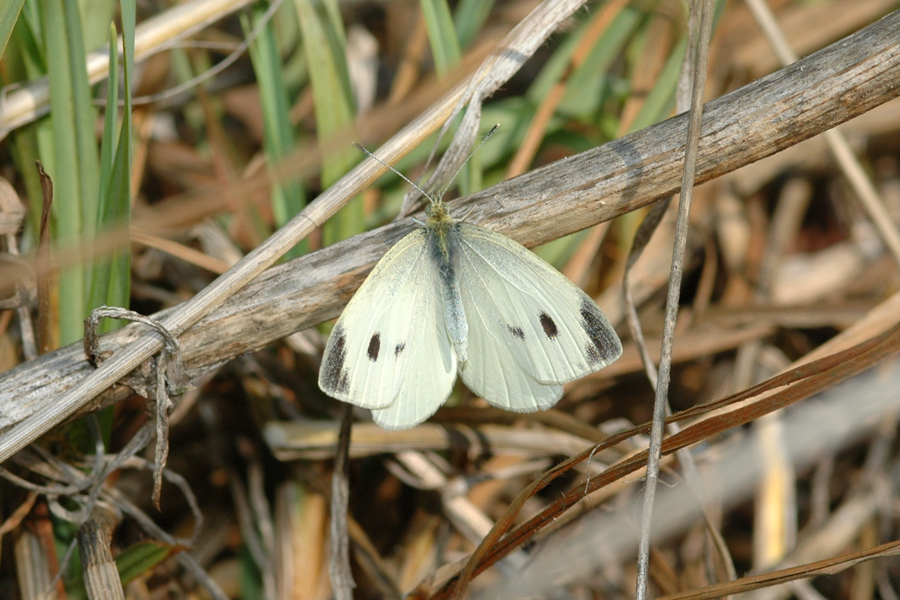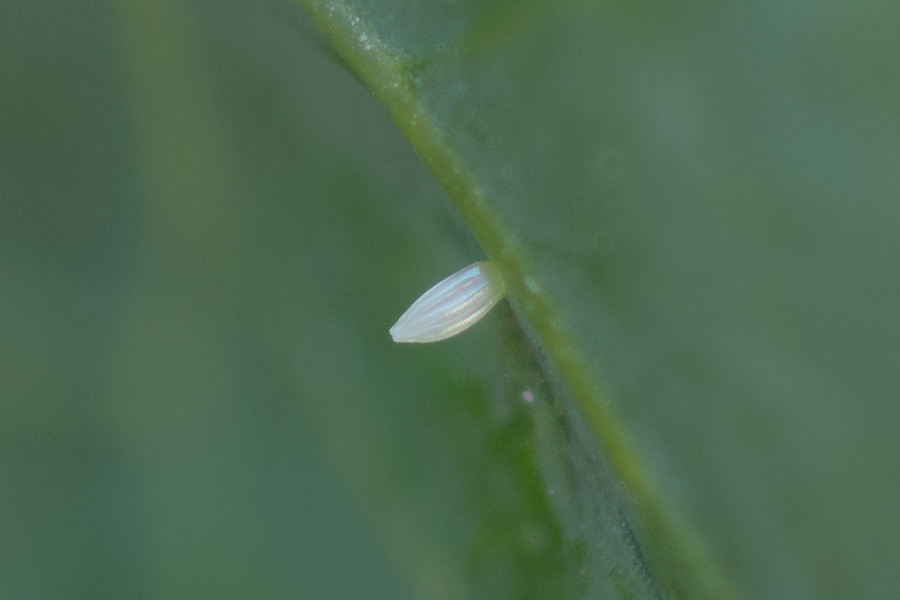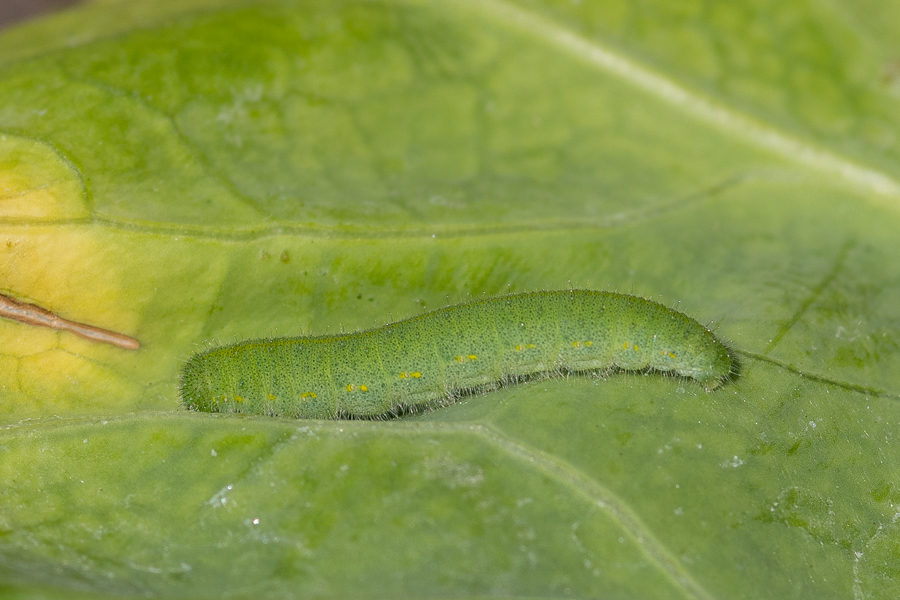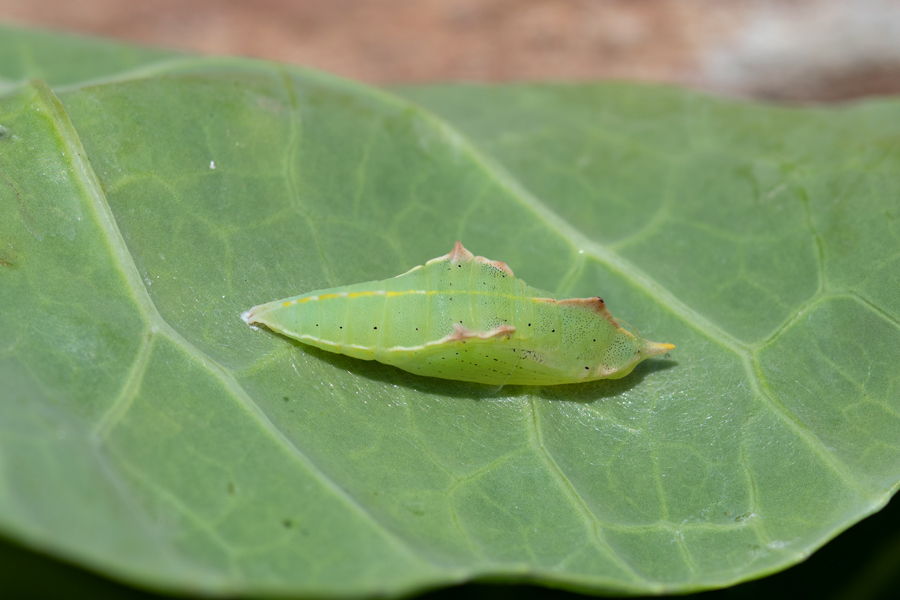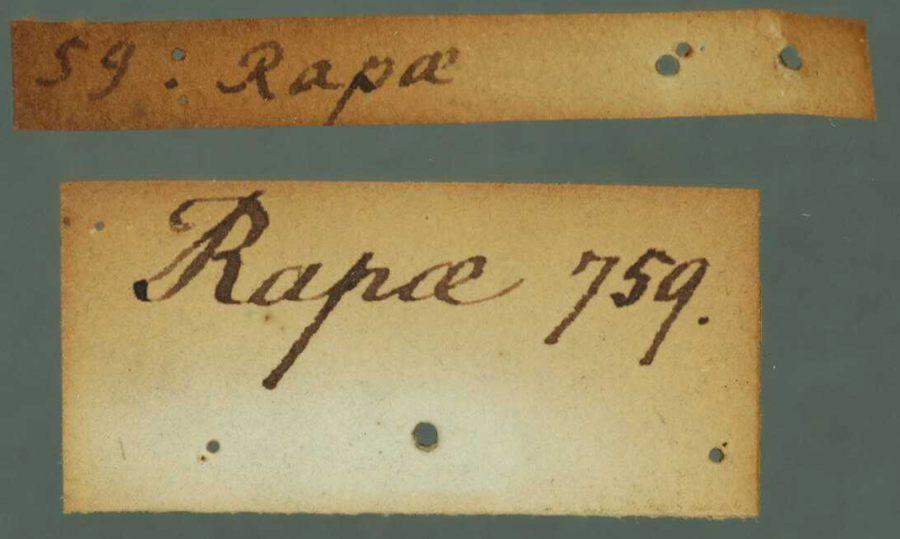Pieris rapae rapae
Cabbage White
This immigrant arrived in North America from Europe in the 1860s and is now an established resident. It can fly year-round in warmer climes, using a variety of mustard-family plants including garden varieties. Compounds in the mustard plants make the adult butterfly distasteful to predators, and the larvae have an oily fluid on their setae (little hairs) that repels ants and other insects. They are actually quite an attractive, graceful butterfly whose wings have a classic shape. This is a great species for kids to rear, and the life cycle proceeds relatively rapidly from egg to adult.
Pieris rapae taking nectar in the garden. April 18, 2014.
Females have two black dots on the forewing; males just one. La Jolla Canyon in the Santa Monica Mountains, January 12, 2006.
Male Pieris rapae in San Gabriel Canyon. March 8, 2006.
Some are more yellow than others on the underside; I believe this is due to uric acid. In my garden in Long Beach, October 25, 2005.
Late in the year - or early - you can still find Pieris rapae while out for a stroll on a nice day. Another female, this one at the El Dorado Park Nature Center in Long Beach. October 20, 2005.
Pieris rapae egg, freshly laid on collard greens in my backyard. July 10, 2022.
Mature caterpillar of Pieris rapae in my garden. July 28, 2022.
This chrysalis is on collard greens, which I used to raise several cabbage whites recently for a book project. August 2, 2022.
This butterfly was named by Carl Linnaeus himself. Here's what the reference looks like. It's from the landmark 10th Edition of the Systema Naturae of 1758. The species Rapae was the 59th to be named under the genus Papilio. Linnaeus included subgeneric groups under Papilio; rapae was with the "Danai candidi" group.
So when did Papilio rapae become Pieris rapae? In 1801, Franz von Paula Schrank's Fauna Boica was published in Ingolstadt, Germany. Here we find a new genus: Pieris. In 1836, Boisduval used Pieris for a subset of the species Schrank had used it for, including rapae, and his treatment was widely adopted.
©Dennis Walker
